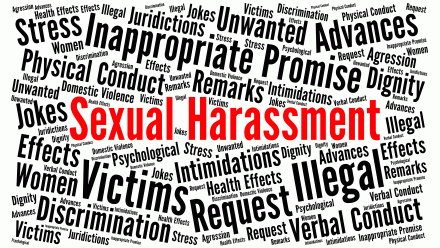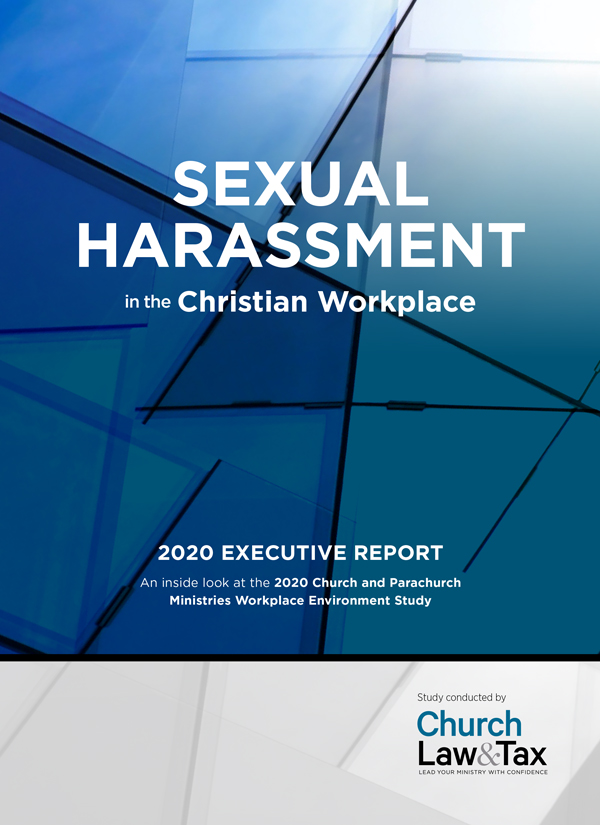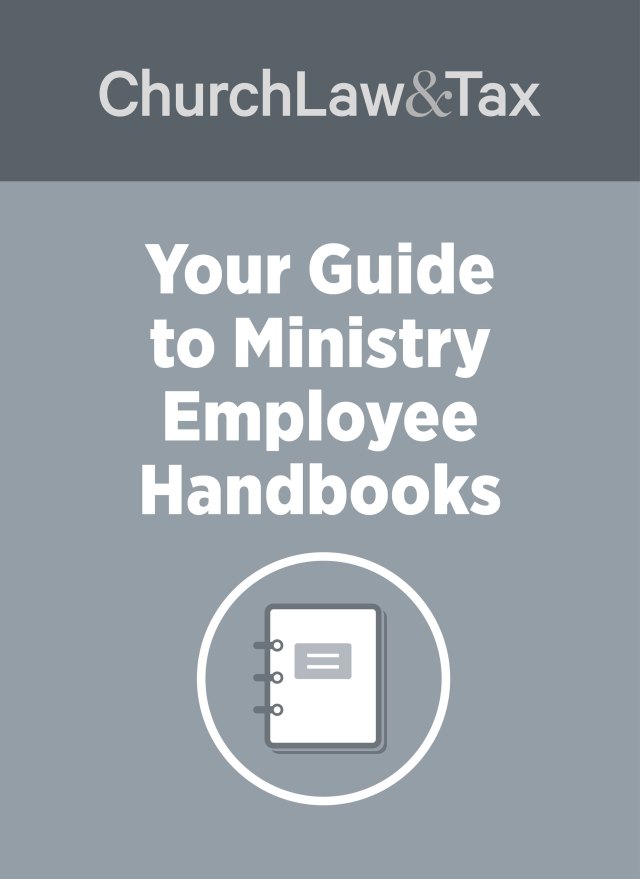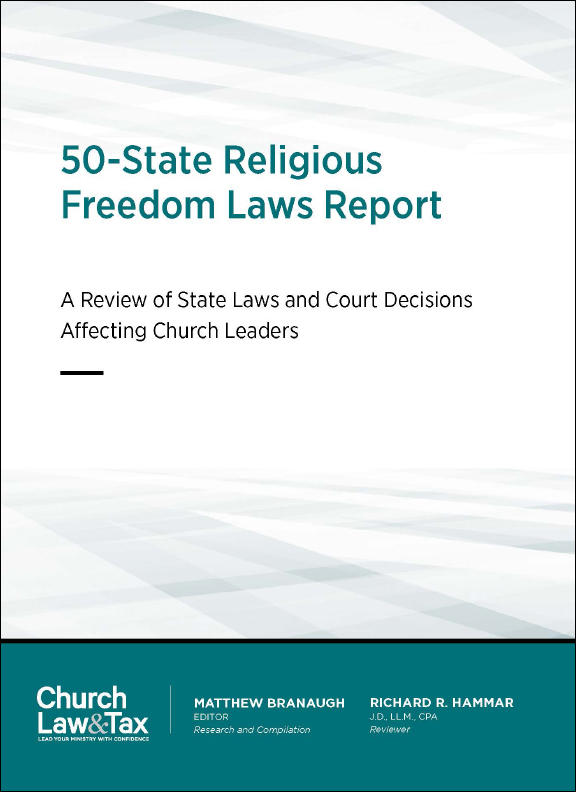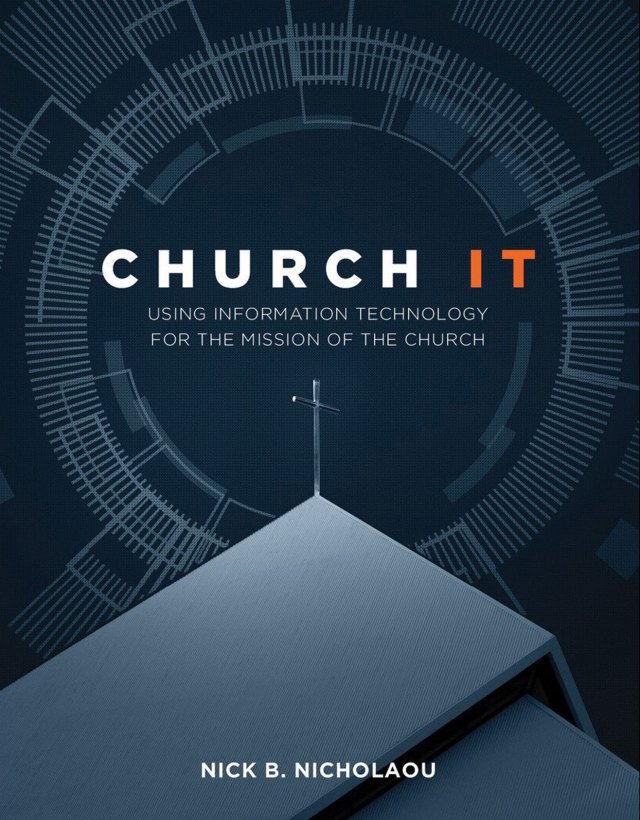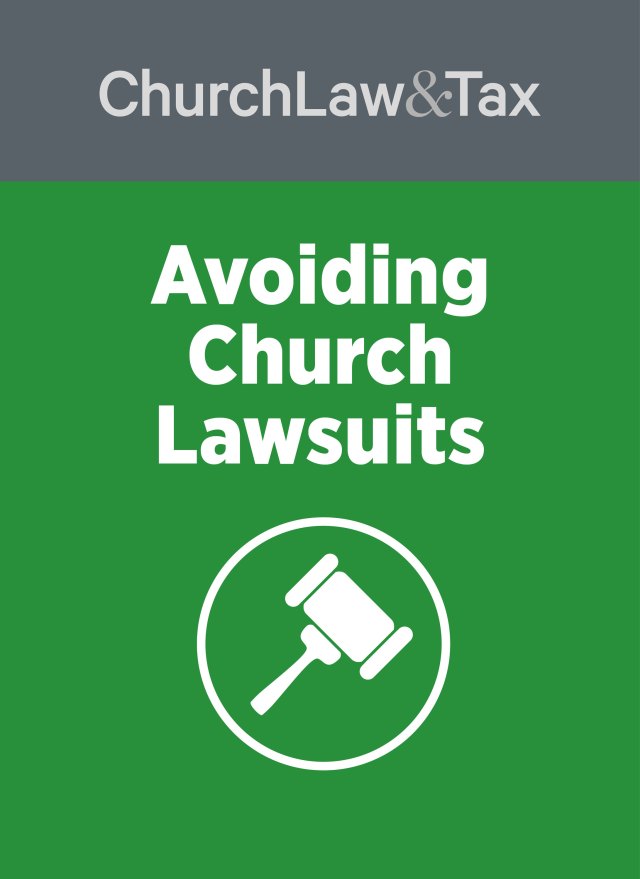Churches are not immune to allegations of sexual harassment, yet many church leaders remain without a clear understanding of what sexual harassment is — and how to reduce the risks.
What Is Sexual Harassment?
Sexual harassment is a form of sex discrimination prohibited under Title VII of the Civil Rights Act of 1964.
The Equal Employment Opportunity Commission (EEOC) defines it as:
“Harassment on the basis of sex is a violation of Section 703 of Title VII.
Unwelcome sexual advances, requests for sexual favors, and other verbal or physical conduct of a sexual nature constitute sexual harassment when:
- Submission to such conduct is made either explicitly or implicitly a term or condition of an individual’s employment;
- Submission to or rejection of such conduct is used as the basis for employment decisions affecting the individual; or
- Such conduct unreasonably interferes with an individual’s work performance or creates an intimidating, hostile, or offensive working environment.”
(29 CFR 1604.11(a))
Types of Sexual Harassment
- Quid Pro Quo Harassment:
Employment opportunities are conditioned on submission to a sexual or social relationship. - Hostile Environment Harassment:
An intimidating, hostile, or offensive work environment is created through unwelcome sexual conduct.
Important Legal Clarifications
- The terms quid pro quo and hostile work environment are not found in Title VII or EEOC regulations. They originated in academic writing and were later adopted by the courts.
(Burlington Industries v. Ellerth, 1998) - Title VII does not prohibit minor teasing, offhand comments, or isolated incidents unless extremely serious.
Conduct must be “so objectively offensive as to alter the conditions of the victim’s employment.”
(Faragher v. City of Boca Raton, 1998)
Voluntary vs. Unwelcome Contact
Consent is not a defense against sexual harassment claims.
The US Supreme Court explains:
“The fact that sex-related conduct was voluntary in the sense that the complainant was not forced to participate against her will is not a defense to a sexual harassment suit… . The correct inquiry is whether [the victim], by her conduct, indicated that the alleged advances were unwelcome.”
Even voluntary contact can be unwelcome and actionable.
How Common Is Sexual Harassment?
Surveys show:
- 50%–60% of women report experiencing workplace harassment.
- Most surveys focus on secular employers; a 2020 nationwide survey conducted by Church Law & Tax revealed it occurred more frequently than many might expect in churches and ministries.
- Victims often feel angry, humiliated, or ashamed.
- 20% of victims never report harassment due to fear of retaliation or belief that nothing will change.
- Only half of employers have adopted a sexual harassment policy.
- 34% of respondents were unsure what to do if harassment occurred.
EEOC Data (between fiscal years 2018 and 2021):
- 27,291 charges alleging sexual harassment;
- With the #MeToo movement’s visible rise in 2017, 7,609 sexual harassment charges were brought in 2018 compared to 6,696 in 2017 – an increase of 13.6%;
- Between 2018 and 2021, sexual harassment charges accounted for 27.7% of all harassment charges compared to 24.7% between 2014 and 2017;
- 78.2% of complaints between 2018 and 2021 were brought by women.
Employer Liability for Sexual Harassment
Employers, including churches, can be liable under several conditions.
Rule 1: Quid Pro Quo Harassment by Supervisors
- A supervisor conditions employment benefits on submission to a sexual relationship.
- Employer is automatically liable, even without knowledge of the conduct.
Rule 2: Harassment by Nonsupervisory Employees
Employers are liable if:
- They knew or should have known about the harassment, and
- Failed to take immediate corrective action.
(29 CFR 1604.11(d))
Rule 3: Harassment by Nonemployees
Employers may be liable if:
- They knew or should have known about harassment by nonemployees and
- failed to act.
(29 CFR 1604.11(e))
Rule 4: Hostile Environment Harassment by Supervisors (Tangible Employment Action)
If harassment results in:
- Firing
- Demotion
- Failure to promote
- Changes in pay or benefits
Employer is strictly liable, even without knowledge.
(Ellerth and Faragher rulings, 1998)
Rule 5: Hostile Environment Harassment by Supervisors (No Tangible Employment Action)
Employer may still be liable but can assert an affirmative defense.
Rule 6: Employer’s Affirmative Defense
To claim an affirmative defense, an employer must show:
- Reasonable care was exercised to prevent and promptly correct harassment (e.g., sexual harassment policy and training).
- The employee unreasonably failed to use complaint procedures.
Why Churches Must Have a Sexual Harassment Policy
A strong written policy:
- Does not protect against all liability.
- Can serve as a defense when no tangible employment action occurs.
- Encourages employees to report harassment early.
EEOC guidance:
“Prevention is the best tool for the elimination of sexual harassment.”
Essentials of a Church Sexual Harassment Policy
A good policy should:
- Clearly define quid pro quo and hostile environment harassment.
- Encourage prompt reporting.
- Protect against retaliation.
- Ensure confidentiality.
- Outline immediate and firm disciplinary actions.
Tip: Always consult an attorney when drafting a policy.
Additional Steps for Churches
Churches should:
- Communicate the policy to all employees.
- Investigate all complaints immediately.
- Discipline offenders appropriately.
- Follow up with victims.
- Review insurance coverage for employment claims.
- Determine whether state law mandates annual sexual harassment prevention training.
Examples Illustrating Sexual Harassment
Quid Pro Quo by Supervisor
- Supervisor conditions employment on sexual favors.
- Church is liable, regardless of policy.
Persistent Invitations by Coworker
- Repeated dinner requests.
- Liability only if behavior is severe and church leadership failed to act.
Supervisor’s Harassment and Termination
- Dismissal following rejection of advances.
- Church liable even without prior knowledge.
Supervisor’s Harassment Without Termination
- Affirmative defense possible if policy exists and employee failed to report.
Churches Not Covered by Title VII
- Still may face liability under state laws or other legal theories.
Case Studies: Sexual Harassment in Churches
Sanders v. Casa View Baptist Church (1998)
- Church not liable — took prompt corrective action.
Jonasson v. Lutheran Child and Family Services (1997)
- Church liable — failed to respond adequately over years.
Elvig v. Calvin Presbyterian Church (2004)
- Hostile environment claims allowed; ministerial termination claims barred.
Carnesi v. Ferry Pass United Methodist Church (2000)
- Lawsuit dismissed to avoid church-state entanglement.
Dolquist v. Heartland Presbytery (2004)
- Church liable for failure to supervise.
Black v. Snyder (1991)
- Consent is not a defense; harassment claim allowed.
Father Belle v. State Division of Human Rights (1996)
- Employer strictly liable for supervisor’s harassment.
Smith v. Raleigh District (1999)
- Church liable for harassment of nonministerial employees.
Smith v. Privette (1998)
- Case allowed to proceed under neutral legal principles.
Bolin v. Oklahoma Conference (2005)
- No harassment severe enough to alter employment.
Brown v. Pearson (1997)
- No fiduciary duty found; denomination not liable.
Alcazar v. Corporation of Catholic Archbishop (2006)
- Ministerial exception limited; hostile environment claims allowed.
Wooten v. Epworth United Methodist Church (2007)
- Church liable; denomination not employer.
2008 WL 5216192
- Behavior inappropriate but not severe or pervasive.
2012 WL 2912516
- Church liable despite lack of prior knowledge.
Peacock v. UPMC Presbyterian (2016)
- Three isolated incidents not enough for hostile environment.
Conclusion: Key Takeaways for Churches
Sexual harassment is a serious legal and moral issue — and churches are not exempt from liability.
To protect both staff and the mission, churches must be proactive.
Key Points to Remember:
- Understand the definitions of quid pro quo and hostile environment harassment.
- Adopt and communicate a strong sexual harassment policy.
- Investigate all complaints immediately and thoroughly.
- Review and strengthen insurance coverage for employment-related claims.
- Conduct ongoing training for staff and supervisors—whether or not state law requires it.
- Recognize that state laws may apply even when Title VII does not.
Final Thought
Prevention is the best defense.
By implementing strong policies, taking complaints seriously, and responding swiftly, churches can protect their people, their ministry, and their legal standing.
We’ve used a combination of AI and human review to make this content easier to read and understand.
